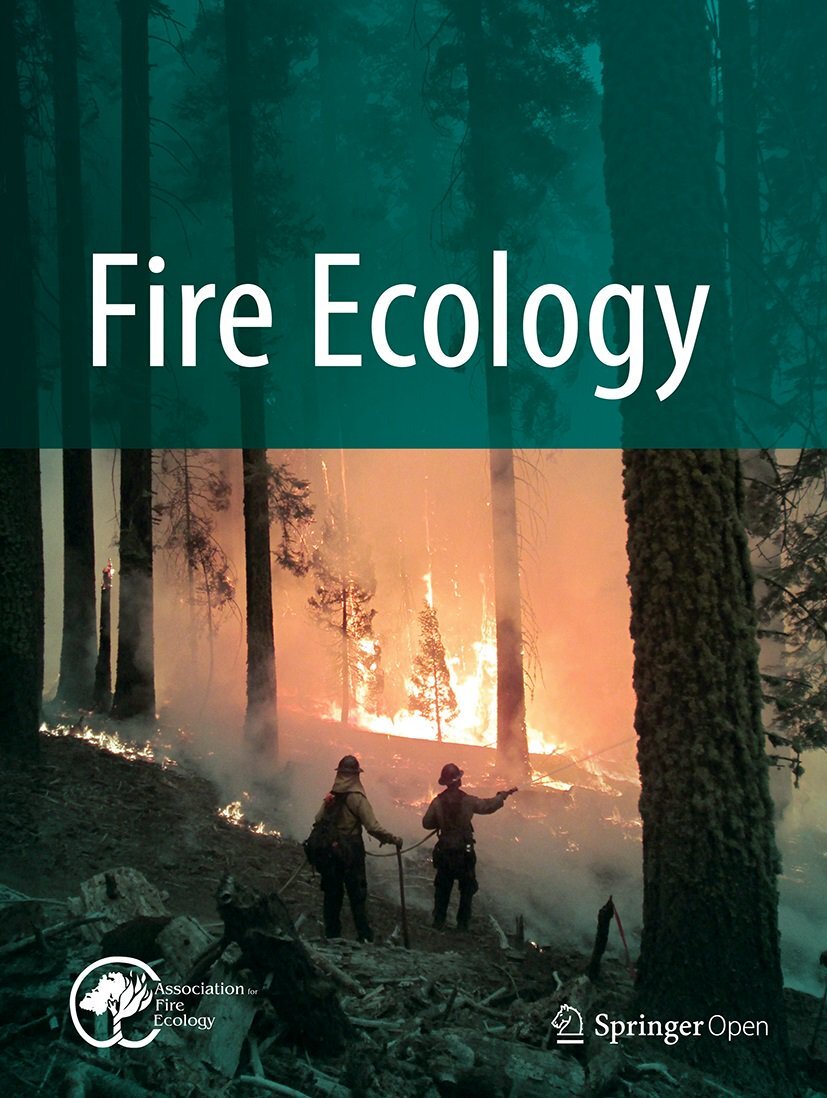
2023 Overall Winner. Photo by Sonya Kaufman, Sandy Island Night Burn.
Night burning in longleaf pine to restore habitat of the red-cockaded woodpecker on Sandy Island, SC with The Nature Conservancy-SC. March 2021.

2023 Runner Up. Photo by Eric Knapp.
Sugar pine snags at night, within a prescribed fire unit on the Stanislaus National Forest, California - October 2022. Long exposure captures the flight of embers.

2023 Winner, Animals and Fire Category. Photo by Rachael Nolan, Cicada Emergence
After the 2019/20 Black Summer fires there was a super year of cicadas in south-eastern Australia. This was driven by substantial new growth stimulated by the fires and above-average rainfall.

2023 Winner, Fire in Motion Category. Photo by Kyle Farmer, Torching in a Managed Redwood Forest
October 17th, 2022. Temp 74F. RH 64.6% PIG 40%. Fire was brought to a 4 year old timber harvest. Single tree selection in redwood, doug fir, grand fir, tanoak, madrone forest. 80% course and find fuel consumption.

2023 Winner, Fire Landscapes Category. Photo by Patrick Olander
End of prescribed burn in Nittälven, Sweden, June 2023.

2023 Winner, People and Fire Category. Photo by Michael Dolan, Saving Sequoia Trees
San Marino engine crew and REAF Dolan after saving a sequoia Tree, Windy Fire.

2023 Winner, After the Fire Category. Photo by Eric Knapp.
Morning after a prescribed burn in mixed-conifer forest on the Stanislaus National Forest, California - October 2022.

2019 Overall Winner. Photo by Trip Jennings, Balance Media.
The Taylor Creek Fire burns a mountainside along the Rogue River in SW Oregon, July 2018.

2019 Runner Up. Photo by Tenaya Wood, Wood's Fire & Emergency Services, SAFE.
Firefighters walking the road after strong winds caused the fire to jump the line. The fire would make a 10,000 acre run that day. Draw Fire, NV, 2017.

2019 Winner, People and Fire Category. Photo by Mike Dolan, Retired BLM.
Likely Fire, shots conducting burn out operations.

2019 Winner, Animals and Fire Category. Photo by Stephen Mason,
An eastern box turtle (Terrapene carolina) exploring a freshly burned habitat in the NJ Pine Barrens.

2019 Winner, Fire in Motion Category. Photo by Ben Wheeler, Pheasants Forever.
Patty Carrick (USFS fire practitioner from Hiawatha National Forest) ignites an evening prescribed fire as part of an effort to restore landscape scale fire to the Great Plains during the 2016 Loup TREX program in Nebraska.

2019 Winner, Fire Landscapes Category. Photo by Ryan McCarley, University of Idaho.
A rare example of stand-replacing prescribed fire in the Western U.S. This operation was conducted on June 20th, 2019 on the Fishlake National Forest in Utah with the goal of restoring Aspen (Populus tremuloides) and the opportunity for multiple research groups to study stand-replacing fire in a controlled setting.

2019 Winner, After the Fire Category. Photo by Renee Lund.
Covered by the first rain enriching the colors the fire behavior left behind in black, gold and green. Parker Ridge Fire near Bonners Ferry, ID 2015.

2017 Overall Winner. Photo by Charlotte Smetanka, Université de Sherbrooke.
Black spruce (Picea mariana) sapling emerging from a hole made by a Whitespotted sawyer's larva on a fallen and burnt black spruce tree in the northern Quebec boreal forest, in Canada.
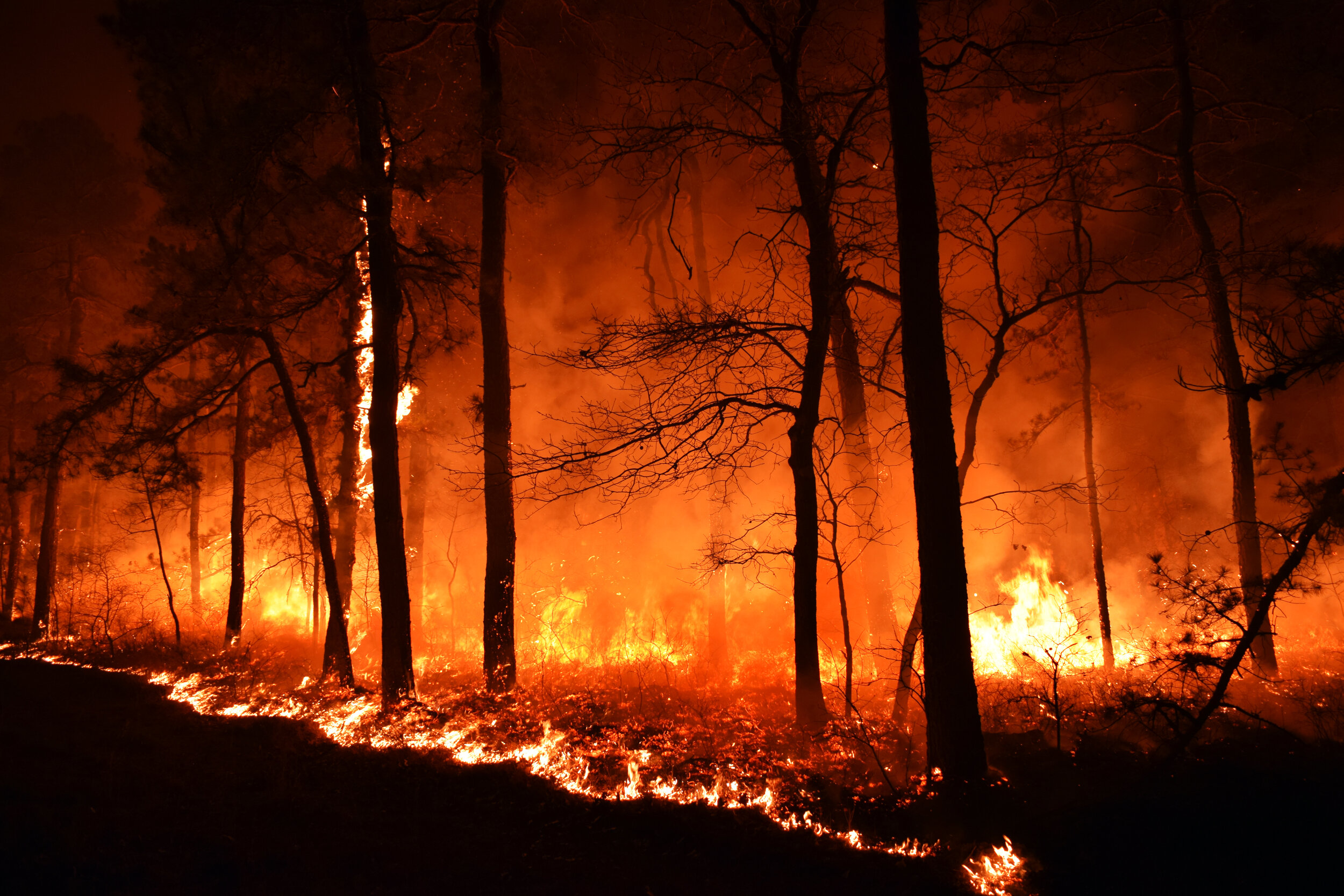
2017 Runner Up. Photo by Mark Grosvenor, University of Exeter.
A flanking fire marks the edge of an experimental fire in the New Jersey Pine Barrens. Instrumented areas of forest (mostly Pinus rigida with understorey of Quercus) was ignited by the New Jersey Forest Fire Service to understand fire behavior.

2017 Winner, After the Fire Category. Charlotte Smetanka, Université de Sherbrooke
Lichens sp. and Spagnum sp. show a significant difference in burn severity in the northern Quebec boreal forest.

2017 Winner, Fire Landscapes Category. Photo by Ignacio San-Miguel, University of British Columbia, Integrated Remote Sensing Studio (IRSS)
The photo taken from helicopter shows the landscape mosaic after 20 years of using the knowledge of fire patterns as benchmarks for harvesting planning near La Ronge in the province Saskatchewan, Canada. This approach focusses on emulating the amount and configuration of unburned vegetation patches after fire events to enhance tree regeneration, maintaining habitat connectivity and providing refugia for in-situ recolonization after harvesting events.

2017 Winner, Animals and Fire Category. Photo by Carrie A. Minerich, University of Idaho
While on a fire assignment in the Great Basin ecosystem of Nevada, I was coordinating buckets drops on the ground. While heli-mopping a juniper tree (Juniperus osteosperma), a soaked mouse emerged.
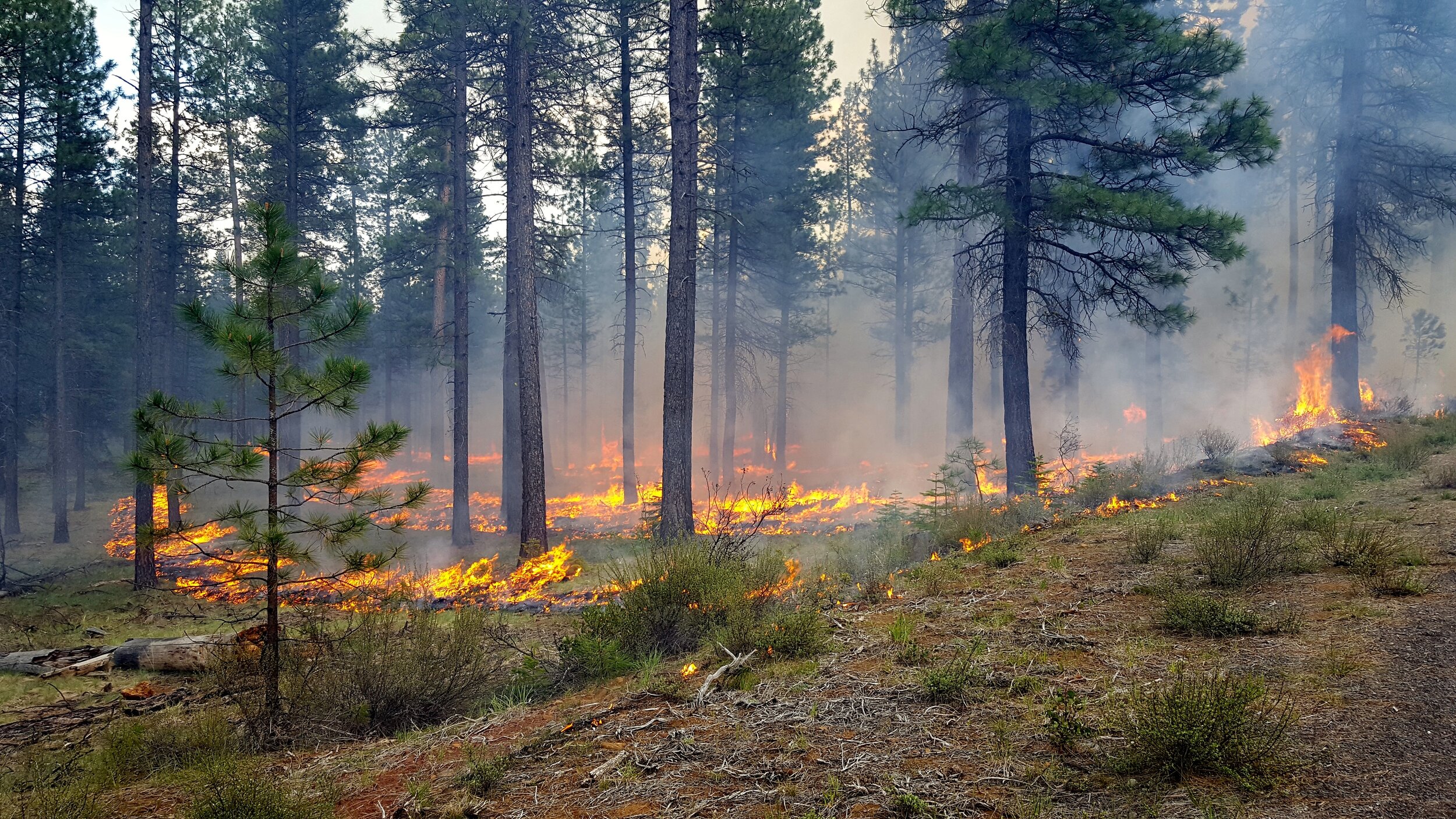
2017 Winner, Fire in Motion Category. Photo by Kayla M Johnston, Oregon State University
Prescribed fire in a dry ponderosa pine forest, Sisters Ranger District, Oregon. Ponderosa pine forests in this area historically burnt at least once a decade, maintaining low fuel loading and open stands. Prescribed fire returns a natural process, keeps forests healthy, and reduces fuels which helps keep communities and firefighters safe.

2017 Winner, Fire in Motion Category. Photo by Tyler Anne Gilbert, University of Idaho, Department of Natural Resources and Society.
This image is from a prescribed burn in March of 2015 near the Eddy Covariance Tower in the Austin Cary Memorial Forest (ACMF). Although this looks like a particularly active fire, the flame height in the image is actually only about 3' at its maximum. ACMF is a teaching and research forest for the University of Florida.

2017 Winner, People and Fire Category. Photo by Kayla M Johnston, Oregon State University
Three engine crew members work to ensure containment of a nighttime burn out operation on the 2017 Milli Fire, Sisters Ranger District, Oregon. Burn out operations are sometimes the safest and most effective control measures for battling wildfires and were critical to management of this fire burning in dry ponderosa pine and mixed conifer forests.

Photo by Trip Jennings, Balance Media
After finishing a brief prayer, Margo Robinson, Cultural Fire Management Council, begins a prescribed burn on her tribe's land in N. California using a bundle of mugwort.

Photo by Bradley Shoemaker.
A cone from a pitch pine (Pinus rigida) spreads the seeds of the next generation following a prescribed fire in the Pine Barrens of New Jersey.

Photo by Ariel D Cowan, Oregon State University
Megalog Study- La Pine, OR During a prescribed burn at Pringle Falls Experimental Forest, our research crew discovered the fruiting bodies of a member of the post-fire fungal community. Our research looked at how soil burn intensity and large log combustion affects fungal communities, soil properties, and ponderosa pine seedling regeneration.

Photo by Renee Lund.
Winds drying out heavy forested ladder fuels burning it's way to the finer fuels in agriculture fields and reaching homesteads below. Parker Ridge Fire near Bonners Ferry, ID 2015.

Photo by Jesús Eduardo Sáenz-Ceja, Universidad Nacional Autónoma de México
Intentional fire created to clear forests and expand the agricultural frontier, a common situation in Mexican forests, even in natural protected areas. Sacred fir (Abies religiosa) forest. Monarch Butterfly Biosphere Reserve, central Mexico.

Photo by Jesse Wooten, Colorado State University.
Ecological memory, by way of material legacy, in the form of pinyon pine (pinus edulis) cones on a standing dead tree from the Spring Creek Fire region in the Rocky Mountains of southern Colorado. Concept of ecological memory and material legacy as described in "Changing disturbance regimes, ecological memory, and forest resilience," Johnstone et al. 2016.

Photo by Anna Talucci, Simon Fraser University
Dragonfly sheltering itself from the rain on a charred lodgepole pine (Pinus contorta var. latifolia) from the 2014 Chelaslie Burn in Entiako Provincial Park, British Columbia, Canada. The photo was taken in July 2015.

Photo by David Godwin, Southern Fire Exchange
A leader of the 2019 Women's Prescribed Fire Training Exchange (WTREX) brings fire across an old-field burn unit at Tall Timbers Research Station near Tallahassee, Florida in March 2019.

Photo by Eric Knapp, US Forest Service
Prescribed fire, Klamath National Forest, California.

Photo by Eric Knapp, US Forest Service.
Ground fire, Sequoia National Park, California.

Photo by Kelsy Gibos, Wildfire Management Branch, Alberta Agriculture & Forestry
Fire returns to the Willmore Wilderness Park in the Alberta Rocky Mountains Natural region. The Rockslide Creek Fire ignited in early June 2015 from a lightning strike that landed in a sub-alpine forest type. Lightning is very rare in these valleys as are spring fires. It is suspected that spring dip and strong winds contributed to the rapid spread of the fire which burned 12,000 ha.

Photo by Eric Knapp, US Forest Service
Monitoring a prescribed fire in Sequoia National Park, California.

Photo by Peter Brown, Rocky Mountain Tree-Ring Research
Fire-scarred ponderosa pine, Black Hills

Photo by Tara Splawinski
Field trip to the Flathead Indian Reservation at the Fire Continuum Conference in Missoula, Montana in 2018

Photo by Nathan Johnson, Center for Natural Lands Management
During a controlled prairie burn on Joint Base Lewis-McChord (Pierce County, WA) on August 27, 2012, a head fire is lit across a research plot to study the potential for fire to create streaked horned lark (Eremophila alpestris strigata) habitat.

Photo by H. Leonardo Martínez-Torres, Universidad Nacional Autónoma de México
This young pine has survived a low-intensity forest wildfire, a footpath in the forest served as a firebreak. Pine forest ecosystem, Uruapan Michoacan, Mexico, May 31st, 2016.

Photo by H. Leonardo Martínez-Torres, Universidad Nacional Autónoma de México
A young woman observe her controlled burning in a wheat plot. Every year the countryside people, men and women, use their fire traditional knowledge to prepare the land for next crop. Michoacan, Mexico, June 18, 2012.

Photo by Kelsy Gibos, Alberta Wildfire Management Branch
I caught this shot while doing some Fire Behaviour Analyst work on the West Chilcotin Fire Complex in British Columbia. I think it is a statement about the severity of the fire season when things are greening up and you are still chasing active edges of the same fire. Although the combustion was fairly complete, there are already signs that this forest will recover.

Photo by Lluís Brotons, CSIC at Inforest jru (CTFC-CREAF)
Ancient agriculture terraces appear after a recent fire in Tarragona (Catalonia, Spain).

Photo by Jamela Thompson, Utah State University
One of The Nature Conservancy crews pile burning at a preserve in Missouri. Dec. 2018

Photo by Christopher Dicus, California Polytechnic University
Prescribed stand replacement fire in bishop pine (Pinus muricata) in California.

Photo by Oloketuyi Akin Johnson, Forestry Research Institute of Nigeria
Post fire treatment at Olokemeji Fire Experimental Plot at Olekemeji Forest Reserve, Nigeria. The fire investigation plot was set up in 1929 and lies on the transition between the Lowland Rain Forest and Derived Savanna Zones.

Photo by Kelsy Gibos, Alberta Wildfire Management Branch
Bright green fireweed breaks up the black on the Chuckegg River Fire, High Level, Alberta .
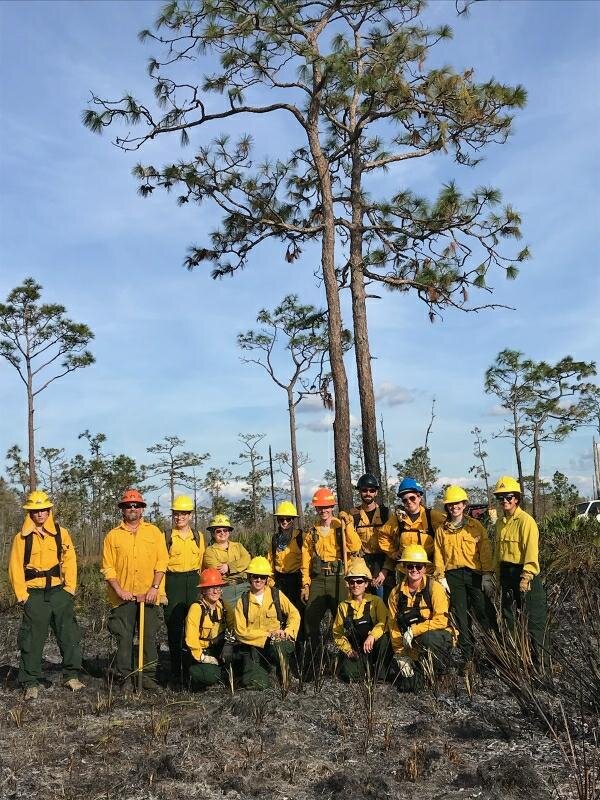
Photo by Anjel Tomako
SAFE members participate in prescribed burn with The Nature Conservancy after the 2017 Fire Congress in Orlando, Florida.

Photo by Jeff Adams
Barn owl (Tyto alba) hunting in front of prairie restoration prescribed fire. Aransas National Wildlife Refuge, Texas.

Photo by Marjie Brown
Field trip at the Fire Continuum Conference in Missoula, Montana in 2018.

Photo by Anna Talucci, Oregon State Univeristy
Mushrooms take refuge next to a deeply charred log post beetle outbreak and wildfire in central interior British Columbia, Canada.

Photo by Maria Marcela Godoy, Centro de Investigación y Extensión Forestal Andino Patagónico CIEFAP
Diostea juncea resprouting 20 days after Las Horquetas Fire. The fire occurred in summer 2015 in a mixed Austrocedrus chilensis-Nothofagus antarctica andean patagonian forest, Cholila, Patagonia Argentina.

Photo by Collin Haffey
Drone workshop participants at the 2019 Fire Congress in Tucson, Arizona

Photo by Maria Marcela Godoy, CONICET-CIEFAP- National Universiy of Patagonia
Convection column of a wildfire occurring in native mixed Nothofagus-Austrocedrus forests in Los Alerces National Park in Patagonia, Argentina. This view was taken from Trevelin valley, 50 km away from wildfire occurrence.
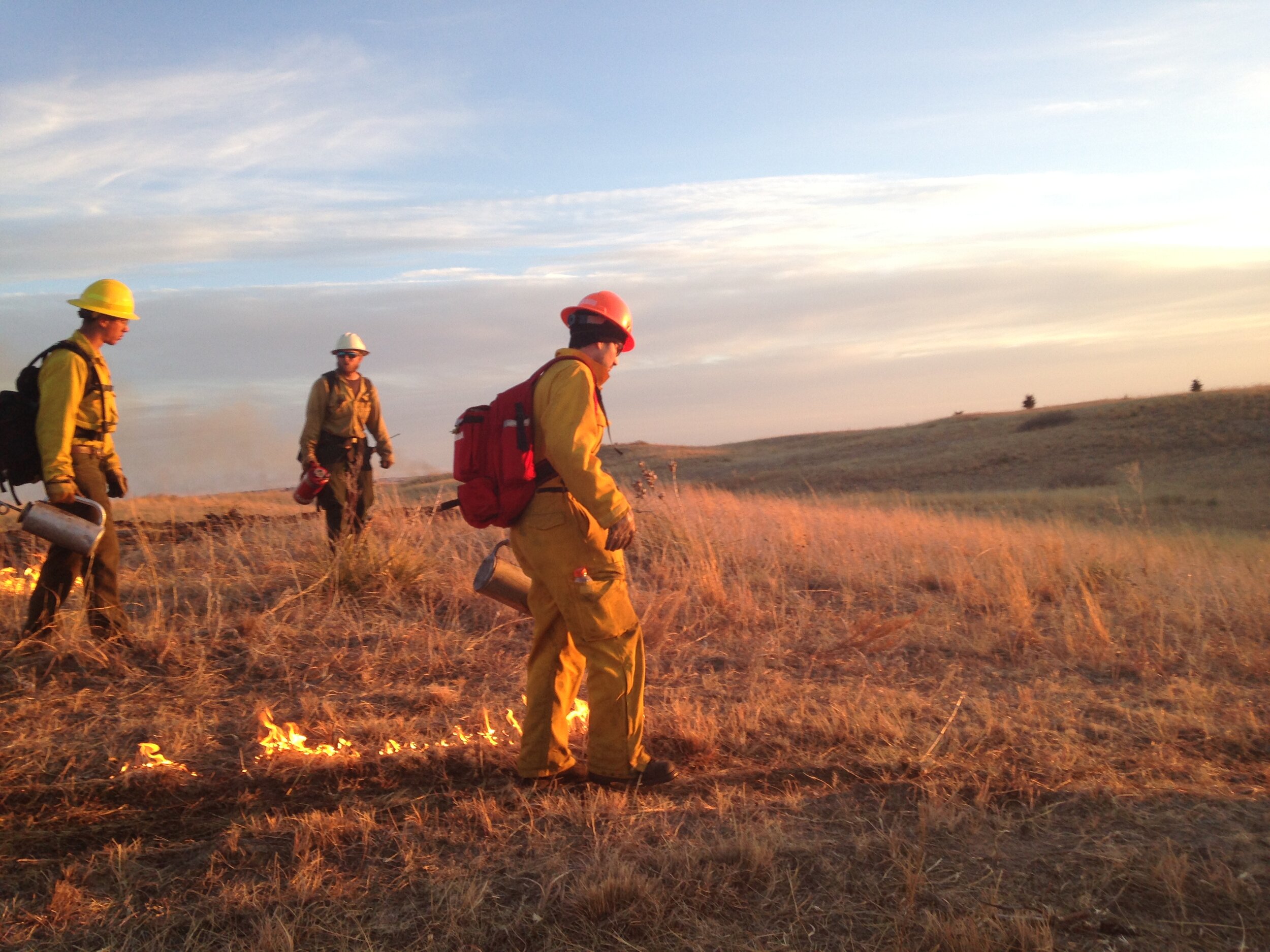
Photo by Jeffrey Kane, Humboldt State University
Humboldt State University and Northern Arizona University students learn how to conduct ignitions as part of the Prescribed Fire Training Exchange (TREX) in the Niobrara Valley of Nebraska.

Photo by Jane Park
Igniting a research burn to study fire and ungulate grazing effects on rough fescue (Festuca campestris) grasslands. Ya Ha Tinda Ranch, Alberta, Canada.

Photo by Annie Oxarart
Plenary session at the 2017 Fire Congress

Photo by Will Harling, Mid Klamath Watershed Council
Participants in the 2014 Klamath River Prescribed Fire Training Exchange pause for a moment during ignitions to share some of their enthusiasm of bringing good fire back to the town of Orleans in the Western Klamath Mountains in far northern California.

Photo by David Godwin, Southern Fire Exchange
Field trip participants at Big Cypress National Preserve after the 2017 Fire Congress in Orlando, Florida.

Photo by Peter Maholland, Atkins North America
Despite advances in technology, the sling psychrometer remains the reliable standard for accurately measuring ambient temperature and humidity in the field. Weather measurements were taken during the application of a growing season prescribed fire in mesic flatwoods at Suwanee River State Park, Florida.

Photo by Lluis Brotons
Field trip participants, 2019 Fire Congress in Tucson, Arizona
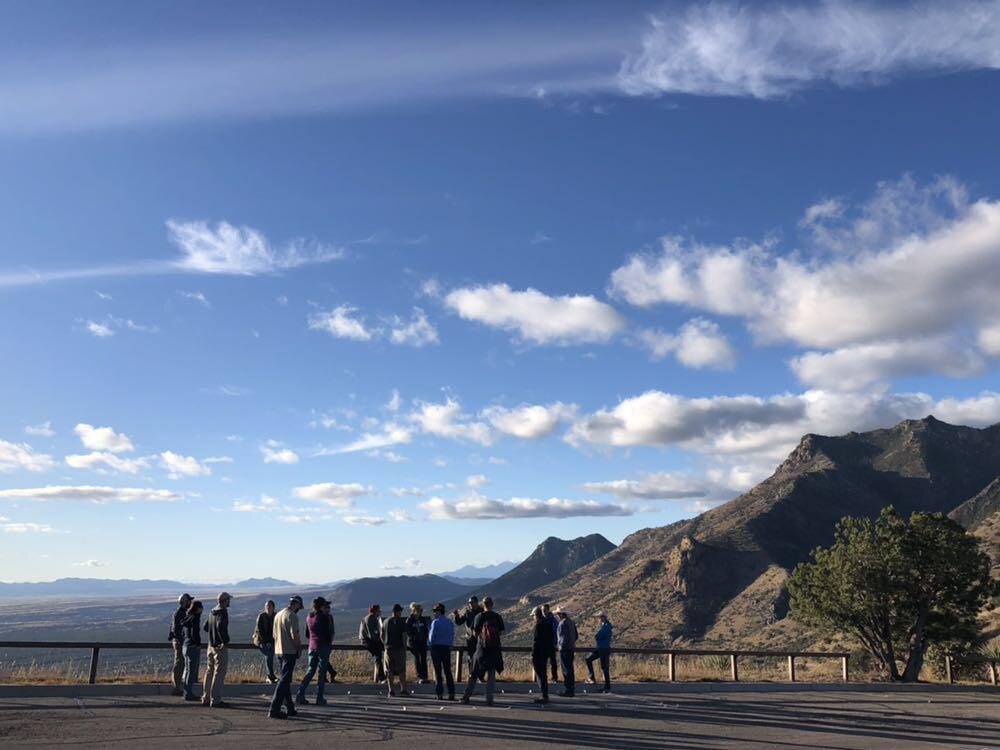
Photo by Alina Cansler, USFS
Field trip participants, 2019 Fire Congress in Tucson Arizona

Photo by Christopher Dicus
Field trip participants at the Large Wildland Fires Conference in Missoula, Montana in 2014.

Photo by Jeffrey Kane, Humboldt State University
Night time prescribed burn in an Oregon white oak woodland in the Bald Hills region of Redwood National Park conducted as part of the Northern California Prescribed Fire Training Exchange (TREX) .

Photo by Annie Oxarart, AFE
Fire AFEx speakers at the 2017 Fire Congress in Orlando, Florida.

Photo by David Godwin, Southern Fire Exchange
A participant at the 2019 Women's Prescribed Fire Training Exchange (WTREX) prepares to ignite the interior of a unit at Tall Timbers Research Station near Tallahassee, Florida in March 2019.

Photo by Juan José Fernández Ortiz, Juanjo
Prescribed fire on Pinus pinaster stand in Castilla-La Mancha, Spain. to reduce fuel load after thinning, pruning and shrub cutting.

Photo by Mamta Bhatta, Tribhuvan University
Post fire survivor Kans (Saccharum spontaneum) in Mountain Ecosystem, Langtang National Park, Nepal: May, 2010.

Photo by Marjie Brown
Field trip leader explains the use of thermal cameras for data collection during the Western Rx Fire Science Research Burn at Lubrecht Experimental Forest in Montana.
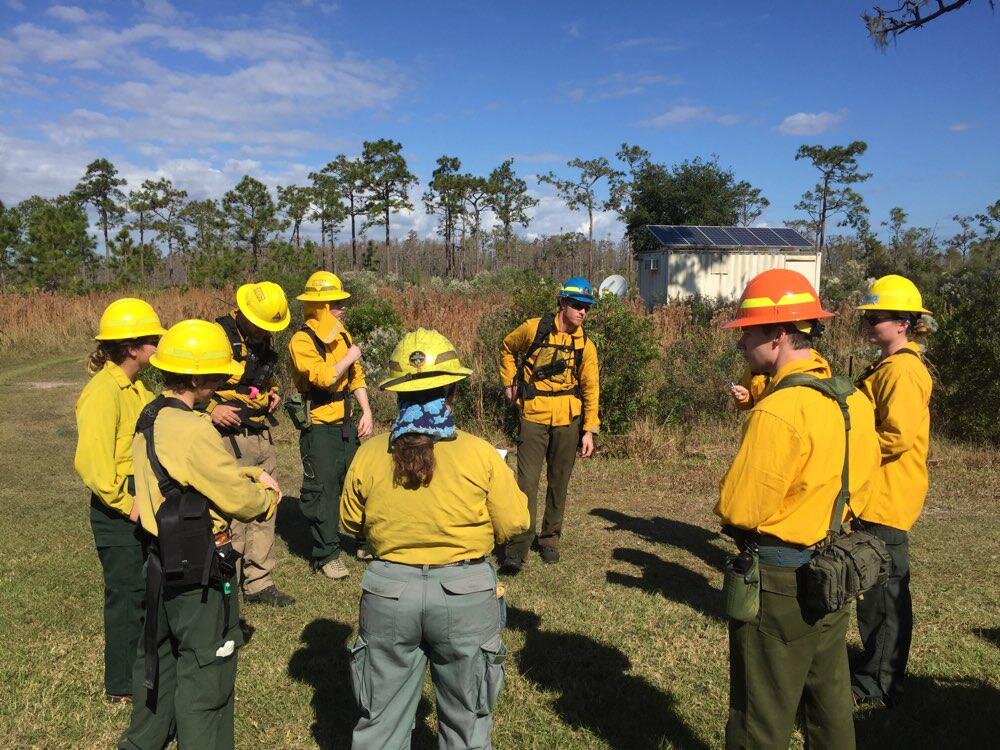
Photo by Carrie Minerich
SAFE members participate in prescribed burn with The Nature Conservancy after the 2017 Fire Congress in Orlando, Florida.

Photo by Bret McNamara, Humboldt State University.
Humboldt State University students visit the Burney Mountain fire lookout tower in July, 2016.

Photo by Marjie Brown
Participants at the Western Rx Fire Science Research Burn at Lubrecht Experimental Forest in Montana, after the Fire Continuum Conference.

Photo by Carlos Pinto, Coordinator fire management program / Fundación Amigos de la Naturaleza - Bolivia
Burning natural grasslands in the Bolivian Amazon

Photo by Jacqueline Dewar
Las Conchas fire spreading through ponderosa pine (Pinus ponderosa) stand. Valles Caldera National Preserve, New Mexico.

Photo by Mark Kaib
Plenary session, 2019 Fire Congress in Tucson, Arizona

Photo by Tara Splawinski
Field trip to the Flathead Indian Reservation at the Fire Continuum Conference in Missoula, Montana in 2018

Photo by Marjie Brown
Exhibit hall at the Fire Continuum Conference in Missoula, Montana in 2018.

Photo by Brandyn Harvey, Marcus Rx
Marcus Rx burn Washington. Lake Roosevelt Nat Rec area. Smokejumpers igniting Pinus ponderosa, forest ecosystem.

Photo by Julie Korb, Sunrise Renewal
McBride Fire, New Mexico sunrise regrowth. Juniperus deppeana 9/23/23.

Photo by Julie Korb, Beauty from Ash
McBride Fire, New Mexico. Sunrise regrowth 9/23/23.

Photo by Julie Korb, Dr. Suess post-fire landscape sunrise
McBride Fire, New Mexico. Sunrise regrowth 9/23/23. Gutierrezia sarothrae.

Photo by Melanie Colavito
An old, fire scarred ponderosa pine on Powell Plateau within the Grand Canyon National Park, Arizona, which is one of the few remaining areas where fire has not been excluded from the ecosystem.

Photo by Jonathan Pangburn, Rx Fire in the Gabilan Range
Application of Rx fire to the Gabilan Range (San Benito County, California, USA) to reintroduce fire to oak woodland. This demonstrates column rotation as fire is pulled away from the edges and back toward the center of the burn to assist with both perimeter control and fuel consumption.

Photo by Sebastian Busby, Fire Resistant Westside Forests
A ~70 year old Douglas-fir stand in the Western Cascades of Oregon was commercial thinned prior to the 2022 Cedar Creek Fire. Combined, the commercial thinning and wildfire enhanced the fire resistance of the stand by reducing ladder fuels and surface fuel loading.

Photo by Rachael Nolan, Fire stimulated flowering
Grass trees (Xanthorrhoea sp.) flowering en masse at Wilsons Promontory in Australia. Grass trees exhibit fire-cued flowering, with both defoliation and smoke found to trigger flowering.

Photo by Abigail Croker, There is no room for fire
Triple La Nina events are crippling humans and wildlife across East Africa. The rains have failed for three consecutive years in a row. People are suffering. Wildlife is perishing. The environment is changing. Savanna ecosystems rely on frequent fires to maintain an open grass-dominated habitat. But drought has struck and resources are scarce. “There is no room for fire”. Fuel can be harvested or consumed by livestock, but “not burnt”. “There is no room for fire” (Maasai research participant).

Photo by Jacob Ney
A prescribed fire consumes surface fuels in an open longleaf pine (Pinus palustris) forest at Tall Timbers Research Station in Tallahassee, FL on 2/24/2021.

Photo by Jacob Ney
A smoke plume rises from prescribed fire operations in longleaf pine (Pinus palustris) forest at Fort Stewart Military Base in Hinesville, GA on 3/2/2022.

Photo by Jacob Ney
Smog blankets the understory of a longleaf pine (Pinus palustris) forest the morning after a prescribed fire at Fort Stewart Military Base in Hinesville, GA on 3/4/2022.

Photo by Jannike Allen, Giving coastal prairie restoration a whirl
Central Coast PBA, Santa Lucia Conservancy, San José State University researchers, and others collaborated to burn coastal prairie with coyote brush (baccharis pilularis) encroachment in Monterey County, CA on 11/1/23 as part of an ongoing study and restoration efforts. Exciting fire behavior included a fire whirl in a section of mowed French broom (Genista monspessulana).

Photo by Jannike Allen, Grove of Old Trees Rx burn
The "Grove of Old Trees" coastal redwood (sequoia sempervirens) forest in Sonoma County California received prescribed fire at North Bay TREX, November 2022.

Photo by Jannike Allen, The present and future fire resilience workforce
Santa Rosa Junior College's Wildfire Resilience Program provided a win-win opportunity for interns to implement prescribed fire and develop stewardship skills while increasing the fire resilience of Shone Forest. Photo taken during a Friday forest crew burn, April 2023 in Forestville, California.

Photo by Sarah Stehn, Tools of the trade
Paleoecologists from the Alaska Quaternary Center at the University of Alaska, Fairbanks organize tools after retrieving a core of lake sediments near Denali Park, AK. Using macroscopic charcoal from well-dated lake sediments, the research team will reconstruct the frequency of fire necessary to assess the natural fire return intervals in the region over the past 1,000 years. Knowledge gained from this National Park Service funded project will assist Denali National Park and fire managers in developing park fire management and fuels treatment plans to manage for natural fire under future climates.

Photo by Sarah Stehn, Monitoring Mosaics
A National Park Service Fire Ecology crew traverses a section of deciduous dominated forest that has not recently burned amongst a matrix of burned spruce forest in Yukon-Charley Rivers National Preserve, Alaska. Fires burn in patterns that reflect extant vegetation, fire weather conditions, and topography among other factors. The mosaic of fire effects produced adds to the diversity of landscapes.

Photo by Sarah Stehn, Cycle Reset
A hillslope along the Yukon River, in Yukon-Charley Rivers National Preserve, Alaska displays the power of fire in shaping boreal vegetation. At left, deciduous trees dominate the landscape amongst standing snags of burnt spruce. At right, extant spruce forest apparently was spared from the most recent fire.

Photo by Armin Weise, Landowner Initiative
Ben is implementing the first burn on a new longleaf pine restoration planting on the multi-generational family farm in central South Carolina with his brother Keith.

Photo by Armin Weise, Grassland Restoration Success
A pitch pine (Pinus rigida) grassland with a mountain oat-grass (Danthonia compressa) understory is rejuvenated by the spring's prescribed burn on Cedar Rock of DuPont State Forest in North Carolina.

Photo by Armin Weise
Southeastern arnica (Arnica acaulis) is the first flower to take advantage of reduced competition shortly after the spring's prescribed burn in a mesic pine woodland at Congaree National Park, South Carolina.

Photo by Kelsey Carlson, On the Line
This fire was located in Happy Jack, AZ in a Ponderosa Pine forest, and taken on August 10th, 2023. As a first-time seasonal wildland firefighter, every minute of my time last summer was spent soaking up every bit of knowledge I could find. Time spent on the line was the one thing that book learning in college can't match!

Photo by Jamie Burton, Fire trickling through
Photo of a planned burn in temperate eucalypt forest in Victoria, Australia. The burn was low intensity and occurred in Spring (October 2019).

Photo by Melinda Adams, Ameen Lotfi. Lul, Redbud Cultural burn basket fire at the Tending and Gathering Garden, California, USA
Cultural fire practitioner Melinda Adams (San Carlos Apache) leading a Lul, Western Redbud cultural burn basket fire at the Tending and Gathering Garden, California, USA

Photo by Melinda Adams. Nope Laol, Deergrass cultural burn at the Tending and Gathering Garden, California, USA
Cultural fire practitioner Melinda Adams (San Carlos Apache) leading a Nope Laol, Deergrass cultural burn at the Tending and Gathering Garden, California, USA

Photo by Ralph Bloemers. Cougar high above the Columbia.
Cougar in high severity patch, near Upper McCord Falls, Eagle Creek fire, Columbia River Gorge

Photo by Ralph Bloemers. Cub in Eagle Creek Burn
Bear cub in Eagle Creek burn, Columbia River Gorge, Oregon
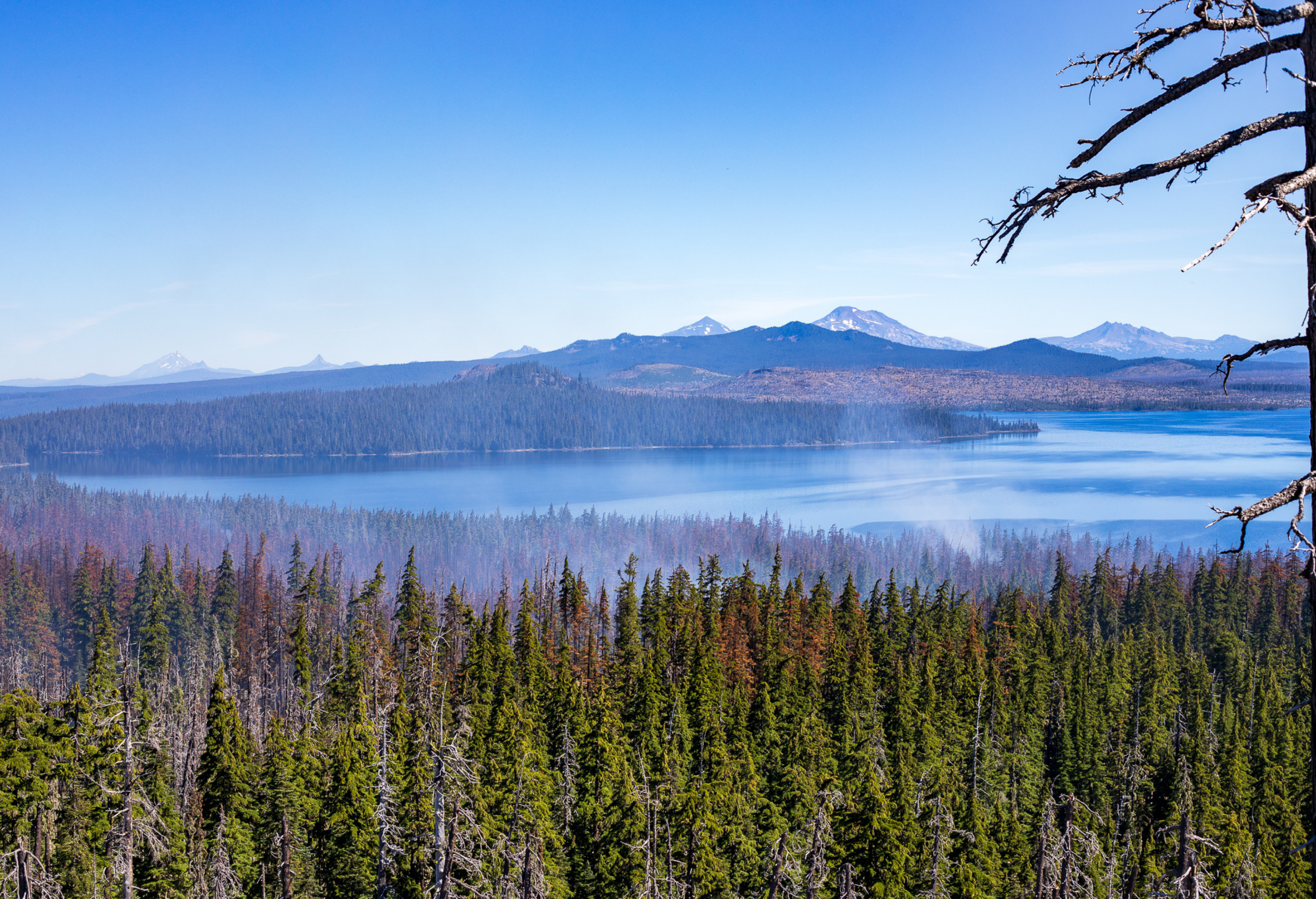
Photo by Lex Scanlan. Fires Old & New.
Waldo Lake, Willamette National Forest, during the 2022 Cedar Creek Fire.

Photo by Ralph Bloemers. Black Bear on Lionshead Butte
Black bear with Mt Jefferson, Lionshead Butte, Lionshead Fire perimeter, Warm Springs Reservation

Photo by Mary Lata. Carol Springs Rx.
Carol Springs Rx: Globe Ranger District, Tonto National Forest. November 8th, 2023.

Photo by Lex Scanlan
Taking a snack break on the Ceder Creek Fire (Willamette National Forest) in the Douglas-fir, mountain hemlock, and Pacific silver fir of the High Cascades.

Photo by Melinda Adams. Walking fire.
Leading a cultural burn in tallgrass prairie Kansas, USA.












































































































